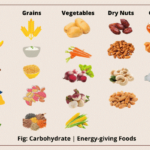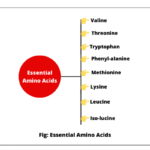Top 30 Government of India Act MCQ Quiz – 1858 to 1935
Welcome to this challenging the Government of India Act MCQ quiz! In this quiz, we’ve compiled top 30 multiple-choice questions based on the Government of India of Act, 1858 – 1935. These MCQ quizzes will test your knowledge and boost your preparation for UPSC, SSC, Railway, and State PCS exams.
So, are you ready to score 30/30? Let’s find out how well you really know the Government of India Act. Let’s begin with question number 1.👇
1. Which of the following act transferred the power to govern India from the East India Company to the British Crown?
A. Government of India Act, 1858
B. Government of India Act, 1915
C. Government of India Act, 1919
D. Government of India Act, 1935
a
The Government of India Act, 1858, transferred the administration of India from the East India Company to the British Crown. It marked the beginning of the British Raj.
2. Under the Government of India Act, 1858, the designation of the Governor-General of India was changed to which of the following, making him the direct representative of the British Crown in India?
A. President of India
B. Viceroy of India
C. Secretary of State
D. None of the above
b
The Government of India Act, 1858, abolished the rule of the East India Company and transferred the administration of India directly to the British Crown. As a result, the Governor-General of India was now designated as the Viceroy of India, acting as the direct representative of the British Crown. Lord Canning was the first person to assume the title of Viceroy of India.
3. The Government of India Act, 1858 created which new post to manage Indian affairs in Britain?
A. Prime Minister of India
B. Viceroy of India
C. Secretary of State for India
D. Commander-in-Chief
c
The Government of India Act, 1858 created a new post as “Secretary of State for India” which was a member of the British Cabinet and was responsible ultimately to the British Parliament.
4. The Secretary of State for India was assisted by how many members in the Council of India as per Government of India Act, 1858?
A. 7
B. 8
C. 12
D. 15
d
The Secretary of State was assisted by a council of fifteen members, known as the Council of India.
5. By virtue of which Act, dyarchy was introduced in India?
A. Indian Council Act, 1909
B. Government of India Act, 1919
C. Government of India Act, 1935
D. Government of India Act, 1947
b
Dyarchy, a system of dual government, was introduced in India by the Government of India Act, 1919. This act was also known as the Montagu-Chelmsford Reforms, which divided provincial subjects into “reserved” and “transferred” categories.
6. The Government of India Act, 1858 was passed mainly due to which historical event?
A. Revolt of 1857
B. First Anglo-Sikh War
C. Formation of Indian National Congress
D. Queen Victoria’s Proclamation
a
The major uprising in 1857 exposed flaws in the East India Company’s administration, prompting Parliament to transfer power to the British Crown. The 1857 revolt is also known as the Sepoy Mutiny or the First War of Independence.
7. The distribution of powers between the Centre and the States in the Indian Constitution is based on the scheme provided in which of the following Act?
A. Government of India Act, 1858
B. Government of India Act, 1909
C. Government of India Act, 1919
D. Government of India Act, 1935
d
The Indian Constitution adopted the three-fold division of powers — Union List, State List, and Concurrent List — from the Government of India Act, 1935. This Act provided the blueprint for India’s federal structure and division of legislative powers between the Centre and provinces, which was later adapted in the Constitution of India (1950).
8. Which of the following statement(s) is/are the principal features of the Government of India Act, 1919?
- Introduction of dyarchy in the executive government of the provinces.
- Introduction of separate communal electorates for Muslims.
- Devolution of legislative authority by the Centre to the provinces.
Select the correct answer using the codes given below:
A. 1 and 2 only
B. 1 and 3 only
C. 2 and 3 only
D. 1, 2 and 3
b
Statements 1 and 3 are correct. Statement 2 is incorrect because Separate communal electorates for Muslims were introduced by the Government of India Act, 1909 (Morley-Minto Reforms), not by the 1919 Act.
9. Which of the following was the biggest source for the Constitution of India?
A. The Government of India Act, 1919
B. The Government of India Act, 1935
C. The Indian Independence Act, 1947
D. None of these
b
The Government of India Act, 1935 was the largest and most significant single source for the Indian Constitution. Key features adopted from it include: Federal structure, Division of powers (Union, State, Concurrent Lists), Office of Governor, Public Service Commissions, Emergency provisions, and Judiciary structure.
10. The Indian Legislature was made bi-cameral for the first time under which of the following Act?
A. Indian Council Act of 1892
B. Government of India Act of 1919
C. Government of India Act of 1935
D. Indian Independence Act of 1947
b
The Indian Legislature was made bi-cameral for the first time under Government of India Act of 1919.
11. Which Act provided for the establishment of a Federal Court and a Reserve Bank of India (Federal Bank)?
A. Government of India Act, 1858
B. Government of India Act, 1909
C. Government of India Act, 1919
D. Government of India Act, 1935
d
The Government of India Act, 1935 was the most comprehensive Act passed by the British Parliament. This act established a Federal Court of India, which came into existence in 1937. It also led to the creation of the Reserve Bank of India (RBI) in 1935, working as the Federal Bank responsible for managing currency and credit.
12. Which Act abolished the Council of India that had been established by the Government of India Act, 1858?
A. Government of India Act, 1919
B. Government of India Act, 1935
C. Indian Councils Act, 1892
D. Indian Independence Act, 1947
b
The Council of India was created under the Government of India Act, 1858 to assist the Secretary of State for India in administering Indian affairs from London. However, the Government of India Act, 1935 abolished this Council.
13. Which Act provided for the establishment of a Public Service Commission, which was later set up in 1926?
A. Government of India Act, 1858
B. Government of India Act, 1909
C. Government of India Act, 1919
D. Government of India Act, 1935
c
The Government of India Act, 1919 made a provision for the creation of a Public Service Commission based on merit and impartial recruitment system for civil services in India. As a result, the first Public Service Commission was established in 1926.
14. The Montague-Chelmsford Report formed the basis of which of the following Acts?
A. Government of India Act, 1909
B. Government of India Act, 1919
C. Government of India Act, 1935
D. Indian Independence Act, 1947
b
The Montague-Chelmsford Report was the constitutional reforms proposed by Edwin Montagu (Secretary of State for India) and Lord Chelmsford (Viceroy of India) for British India. This report laid the foundation for the Government of India Act, 1919, which introduced: Dyarchy in provinces, Bicameral legislature at the centre, and Limited franchise expansion.
15. Which of the following Act separated Burma from British India and also created the two new provinces of Orissa and Sind?
A. Government of India Act, 1909
B. Government of India Act, 1919
C. Government of India Act, 1935
D. Indian Independence Act, 1947
c
The Government of India Act, 1935 was a landmark law that brought several administrative changes. It separated Burma (now Myanmar) from British India in 1937. It also led to the creation of two new provinces: Orissa and Sind.
16. Which of the following statement(s) is/are correct with reference to the Government of India Act, 1935?
- For the first time, the Indian Central Legislature was made bicameral, consisting of the Federal Assembly and the Council of State.
- The Act divided legislative powers between the Centre and Provinces.
- It was a lengthy and detailed document having 321 Sections and 10 Schedules.
Select the correct answer using the code given below:
A. 1 and 2 only
B. 2 and 3 only
C. 1 and 3 only
D. 1, 2 and 3
d
All statement are correct. The Government of India Act, 1935 established a bicameral legislature at the Centre — the Federal Assembly (lower house) and the Council of State (upper house). This Act introduced a three-fold division of legislative powers — into Union List, Provincial List, and Concurrent List — laying the foundation for India’s federal structure. The Government of India Act, 1935 was the longest legislation passed by British Parliament at the time. It contained 321 Sections and 10 Schedules.
17. Under which of the following Acts were direct elections introduced in India for the first time?
A. Government of India Act, 1858
B. Government of India Act, 1909
C. Government of India Act, 1919
D. Government of India Act, 1935
c
The Government of India Act, 1919 (Montagu-Chelmsford Reforms) introduced direct elections for the first time in India. It allowed Indian citizens to directly vote for certain members of the legislative councils. Although the franchise was limited to a small percentage of the population based on property, tax, or education. Prior to this, members were either nominated or indirectly elected.
18. Who was the Prime Minister of England that granted voting rights to Indian women for the first time under the Government of India Act, 1919?
A. Winston Churchill
B. Ramsay MacDonald
C. Neville Chamberlain
D. David Lloyd George
d
David Lloyd George was the Prime Minister of the United Kingdom when the Government of India Act, 1919 was passed. Under this Act, limited voting rights were granted to Indian women for the first time, subject to certain qualifications related to property, education, or marriage.
19. Which of the following statement(s) is/are correct with reference to the Government of India Act, 1919?
- Central subjects were those which were exclusively kept under the control of the Central Government.
- The provincial subjects were sub-divided into transferred and reserved subjects.
- The transferred subjects were to be administered by the Governor and his Executive Council with no responsibility to the Legislature.
- The reserved subjects were to be administered by the Governor and his Executive Council with no responsibility to the Legislature.
Select the correct answer using the code below:
A. 1, 2 and 4 only
B. 2, 3 and 4 only
C. 1, 3 and 4 only
D. 1, 2, 3 and 4
a
The transferred subjects were administered by the Governor with the aid of Ministers responsible to the Legislative Council in which the proportion of elected members was raised to 70 percent. This was the key feature of dyarchy introduced by the 1919 Act.
20. Under which Act was the provincial budget separated from the central budget for the first time in British India?
A. Government of India Act, 1858
B. Government of India Act, 1909
C. Government of India Act, 1919
D. Government of India Act, 1935
c
The Government of India Act, 1919 (also known as the Montagu–Chelmsford Reforms) introduced the separation of the provincial budget from the central budget.
21. With reference to the Government of India Act, 1919, which of the following statements is/are correct?
- The Council of State was the upper house consisting of 60 members.
- The Legislative Assembly was the lower house consisting of about 144 members.
- Both houses were fully elected directly by the people.
Select the correct answer using the code below:
A. 1, 2 and 3 only
B. 1 and 2 only
C. 2 and 3 only
D. 1 and 3 only
b
Statement 3 is incorrect: Both houses were not fully elected directly by the people. In Council of State (Upper House), only 34 members were elected out of 60 members, and others were nominated. In Legislative Assembly (Lower House), 104 members were elected out of 144 members and others are nominated.
22. Which of the following Government of India Acts was passed to consolidate the provisions of all previous Government of India Acts?
A. Government of India Act, 1909
B. Government of India Act, 1915
C. Government of India Act, 1919
D. Government of India Act, 1935
b
The Government of India Act of 1915 was primarily a consolidating act which was passed to consolidate all the previous existing acts such as 1833, 1858, 1861, 1892, and others, into a single systematic legal document. This Act did not introduce new reforms. It simply reorganized and codified existing laws.
23. What was the total strength of the Council of States under the Government of India Act, 1935?
A. 200
B. 250
C. 260
D. 350
a
Under the Government of India Act, 1935, the Council of States was the Upper House of the Federal Legislature. It consisted of 260 members in total: 156 members from British India and 104 members from Indian States. The Council of States was designed to be a permanent house with 1/3rd of the members retiring every 3 years.
24. Under the 1935 Act, the distribution of legislative powers was made under which lists?
A. Union and State Lists
B. Federal and Provincial Lists
C. Central and Regional Lists
D. Federal, Provincial, and Concurrent Lists
d
The Government of India Act, 1935 was the first to introduce the three-fold distribution of legislative powers, such as Federal, Provincial, and Concurrent Lists, which was later adopted in the Indian Constitution.
25. Which one of the following statements about the Government of India Act, 1935 is incorrect?
A. It provided for a Federal Legislature in India.
B. It introduced direct elections for both Houses.
C. It introduced a bicameral legislature at the central level in India.
D. It divided subjects into Federal, Provincial, and Concurrent lists.
b
The Government of India Act, 1935 provided for the direct elections only for some members of the Federal Assembly. The Council of States included many nominated and indirectly elected members. So both Houses were not fully directly elected.
26. What was the total strength of the Federal Assembly under the Government of India Act, 1935?
A. 150 members
B. 250 members
C. 375 members
D. 440 members
c
The Federal Assembly (Lower House) having five years duration had a total of 375 members (250 from British India and 125 from Indian States).
27. Which of the following statements is correct regarding the Government of India Act, 1935?
A. It conferred Dominion Status to India as promised by the Simon Commission in 1929.
B. It granted complete independence to India.
C. It did not confer Dominion Status despite being promised by the Simon Commission.
D. It made the Indian Constitution secular for the first time.
c
The Simon Commission (1927) recommended that India should be given Dominion Status, and this was reiterated by the British Prime Minister in 1929. However, the Government of India Act, 1935 did not fulfill this promise.
28. Who was the Viceroy of India when the Government of India Act, 1935 was passed?
A. Lord Irwin
B. Lord Linlithgow
C. Lord Wavell
D. Lord Willingdon
d
The Government of India Act, 1935 was passed by the British Parliament in August 1935. At that time, Lord Willingdon was the Viceroy and Governor-General of India.
29. Under the Government of India Act, 1935, who had the power to issue Ordinances in case of emergency?
A. The Prime Minister of England
B. Governor-General of India
C. The Governor of a Province
D. The Secretary of State for India
b
The Governor-General of India was the constitutional head of the Government of India. He had the legal and constitutional authority to issue Ordinances under the Government of India Act, 1935.
30. Consider the following statements regarding the Government of India Acts passed during British rule:
- The Government of India Act, 1858 transferred powers from the East India Company to the British Crown.
- The Indian Councils Act, 1909 introduced separate electorates for Muslim community for the first time.
- The Government of India Act, 1919 introduced Dyarchy at the Centre and Provincial Autonomy in the Provinces.
- The Government of India Act, 1935 introduced a Federal Court and divided legislative powers into Federal, Provincial, and Concurrent Lists.
Which of the above statements are correct?
A. 1, 2 and 4 only
B. 1, 2 and 3 only
C. 2, 3 and 4 only
D. 1, 2, and 3 and 4
a
Statement 3 is incorrect. The Government of India Act, 1919 introduced Dyarchy at the Provincial level, not at the Centre.
Quiz Results
Total Questions: 0
Correct Answers: 0
Incorrect Answers: 0
Score: 0%






